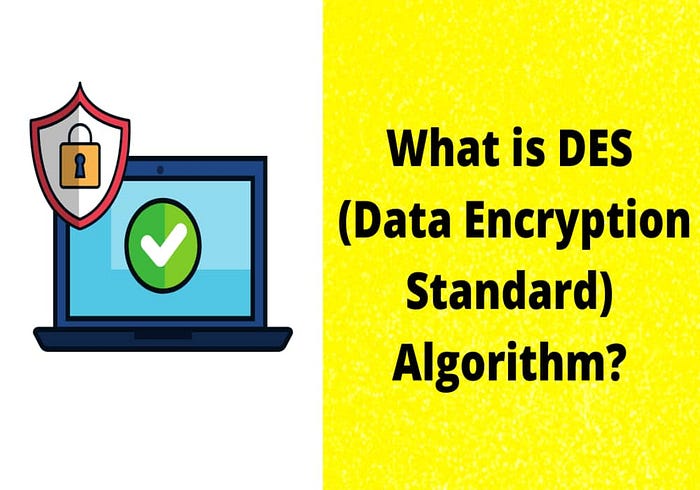Demystifying the Data Encryption Standard (DES) | 2023
Key Features, Process, Advantages, and Limitations of the Classic Encryption Algorithm | Karthikeyan Nagaraj

Introduction:
- In today’s world of data sharing and exchange, ensuring the security of sensitive information is crucial.
- One popular method of protecting data is through encryption, a process that converts plaintext into ciphertext, which can only be read by authorized parties.
- The Data Encryption Standard (DES) is a classic encryption algorithm that was widely used in the 1970s and 1980s to secure sensitive data. In this article, we will explore the key features, processes, advantages, and limitations of DES.
Key Features of DES:
- Block Cipher: DES is a block cipher encryption algorithm that operates on 64-bit blocks of plaintext at a time.
- Symmetric Key Encryption: DES uses a symmetric key encryption system, meaning that the same key is used for both encryption and decryption.
- Fixed Key Size: DES uses a fixed key size of 56 bits, which limits its security compared to modern encryption algorithms that use longer key sizes.
- Feistel Cipher: DES uses the Feistel Cipher structure, which splits the plaintext into two halves and then iteratively encrypts each half using a series of mathematical operations.
Encryption Process:
The encryption process of DES involves the following steps:
- Key Generation: The 56-bit key is generated by applying a permutation to the original key, which makes the key more secure and harder to guess.
- Initial Permutation: The 64-bit plaintext is subjected to an initial permutation.
- Splitting: The 64-bit block is split into two halves, each with 32 bits.
- Rounds: DES consists of 16 rounds, with each round involving a complex sequence of substitutions and permutations to both halves of the block.
- Final Permutation: After the 16 rounds, a final permutation is applied to the output to produce the ciphertext.
Decryption Process:
The decryption process of DES is simply the reverse of the encryption process, with the ciphertext being fed into the algorithm, and the steps being performed in reverse order. The same key is used for both encryption and decryption.
Advantages of DES:
- DES is a widely used encryption algorithm that has stood the test of time and is still used in some applications today.
- It is a well-studied and well-understood encryption algorithm, which has been analyzed for potential weaknesses and vulnerabilities.
- DES is relatively fast and efficient compared to other encryption algorithms.
Limitations of DES:
- The fixed key size of 56 bits makes DES vulnerable to brute force attacks, where an attacker can try all possible keys until the correct one is found.
- The 64-bit block size of DES means that it is vulnerable to block cipher attacks, such as the birthday attack, where an attacker can exploit the statistical likelihood of two blocks having the same ciphertext.
- DES is considered to be less secure than modern encryption algorithms that use longer key sizes and larger block sizes.
Applications of DES:
Despite its limitations, DES is still used in some applications today, such as:
- Legacy systems: DES is still used in some legacy systems that were developed before the advent of modern encryption algorithms.
- Standardization: DES is still included in some encryption standards, such as the Federal Information Processing Standards (FIPS) in the United States.
- Education and research: DES is still used in education and research to teach the principles of cryptography and to study the strengths and weaknesses of encryption algorithms.
Conclusion
- DES is a classic encryption algorithm that played a significant role in securing sensitive data in the 1970s and 1980s.
- While it has limitations, such as a fixed key size and block size, and vulnerability to brute force and block cipher attacks, it is still
